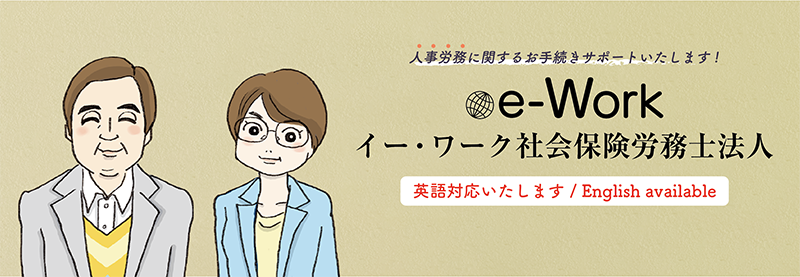Companies are facing an increasing need to improve the workplace to support employees with and without disabilities to work together. Law amendments for that purpose are due to be enforced over a two-year period from April 2024. This article explains about main points of the amendments, for they are likely to have major impacts on companies administration.
[1] Increase in the legal employment rate of disabled workers 【Enforced in April 2024, July 2026】
Private companies’ legal employment rate of disabled workers will be raised in two phases from 2.3% to 2.5% in April 2024, and to 2.7% in July 2026. In the past, companies with 43.5 or more regular employees were required to have at least one disabled worker. After the rate increase to 2.5%, companies with at least 40.0 employees will become subject to this requirement.
As a basic rule, regular employees in this case is defined as employees whose scheduled weekly work hours are 20 hours or more and are to be employed (or expected to be employed) for over one year. A worker whose scheduled weekly work hours are 30 hours or more is counted as one, while a worker whose weekly work hours are 20 hours or more and less than 30 hours is counted as 0.5.
[2] Special exception to the rule on the calculation of actual employment rate 【Enforced in April 2024】
Currently, in calculating an actual employment rate of workers with disabilities, workers whose weekly standard work hours are 20 hours or more are taken into account. From April 2024, a worker with mental disabilities, severe physical disabilities or severe intellectual disabilities who work 10 hours or more and less than 20 hours per week will also be counted as 0.5. The chart below shows the new calculation rule.
Chart: Counting method for the disabled workers employment system
|
Standard weekly work hours |
30 hours or more |
20 hours or more and less than 30 hours |
10 hours or more and less than 20 hours |
|
|
Physically disabled workers |
1 |
0.5 |
- |
|
|
|
Severe |
2 |
1 |
0.5 |
|
Intellectually disabled workers |
1 |
0.5 |
- |
|
|
|
Severe |
2 |
1 |
0.5 |
|
Mentally disabled workers |
1 |
0.5* |
0.5 |
|
*The method of counting a short-time worker with mental disabilities as 1 rather than 0.5 will be maintained for the time being.
This change reflects the situation with a growing number of people with disabilities, regardless of the types of disabilities, seeking employment with weekly work hours less than 20 hours, although working long hours is difficult. The need is particularly strong among individuals with mental disabilities. Considering this situation, the government has been implementing measures to provide more employment opportunities for people with disabilities seeking employment with no more than 20 hours per week.
[3] Disabled workers employment levy system【Enforced in April 2024】
Companies with more than 100 regular employees that do not satisfy the legal employment rate of disabled workers will be imposed a levy (50,000 yen per worker short of the requirement each month).
Meanwhile, companies with more than 100 regular employees that satisfy the legal employment rate will be provided with adjustment money (27,000 yen per worker in excess of legal employment rate each month). The amount of adjustment money will be revised in April 2024. In the case the number of disabled workers in excess of the legal rate is up to 120 per year (10 per month by simple calculation), the amount of monthly payment will be 29,000 yen per disabled worker in excess of the standard. If the number is more than 120 per year, the amount will be 23,000 yen. The amount for companies with 100 or less regular employees will also be revised.
In the past, companies hiring disabled workers whose scheduled weekly work hours are 10 hours or more and less than 20 hours received special payment. This payment will be abolished since workers with mental disabilities or severe physical or intellectual disabilities working 10 hours or more and less than 20 hours per week will be counted as 0.5 as explained in [2] above. One-year moratorium will be allowed regarding workers with non-severe physical and intellectual disabilities hired before March 31, 2024, whose scheduled work hours are 10 hours or more and less than 20 hours.
[4] Decreasing of exclusion rate 【Enforced in April 2025】
In business sectors disabled workers’ employment is considered difficult (construction, freight transportation, medical services, etc.,) it is allowed to lower the employment rate by applying an exclusion rate and deducting a certain number of workers. The exclusion rate has been lowered in phases since April 2004 and will be totally abolished in the future. With 10% decrease in the rate in all sectors scheduled for April 2025, nine business categories, including non-ferrous metal manufacturing (excluding non-ferrous metals primary smelting and refining,) warehousing, air transportation, mineral mining for ceramics materials (limited to refractory, pottery, glass and cement materials) will no longer be applied an exclusion rate. Meanwhile, an exclusion rate will be applied to three additional categories, i.e., security services, elderly care facility services, long-term care homes.
Please understand details of the changes and take necessary measures.
[Reference]
Labor Ministry, “Measures for employment of disabled workers”
https://www.mhlw.go.jp/stf/seisakunitsuite/bunya/koyou_roudou/koyou/shougaishakoyou/index.html
“Amendments to the Act to Facilitate the Employment of Persons with Disabilities in fiscal 2022”
https://www.mhlw.go.jp/stf/seisakunitsuite/bunya/0000077386_00019.html
Japan Organization for Employment of the Elderly, Persons with Disabilities and Job Seekers
https://www.jeed.go.jp/english/
The information is based on laws and regulations as of the date of this article.













